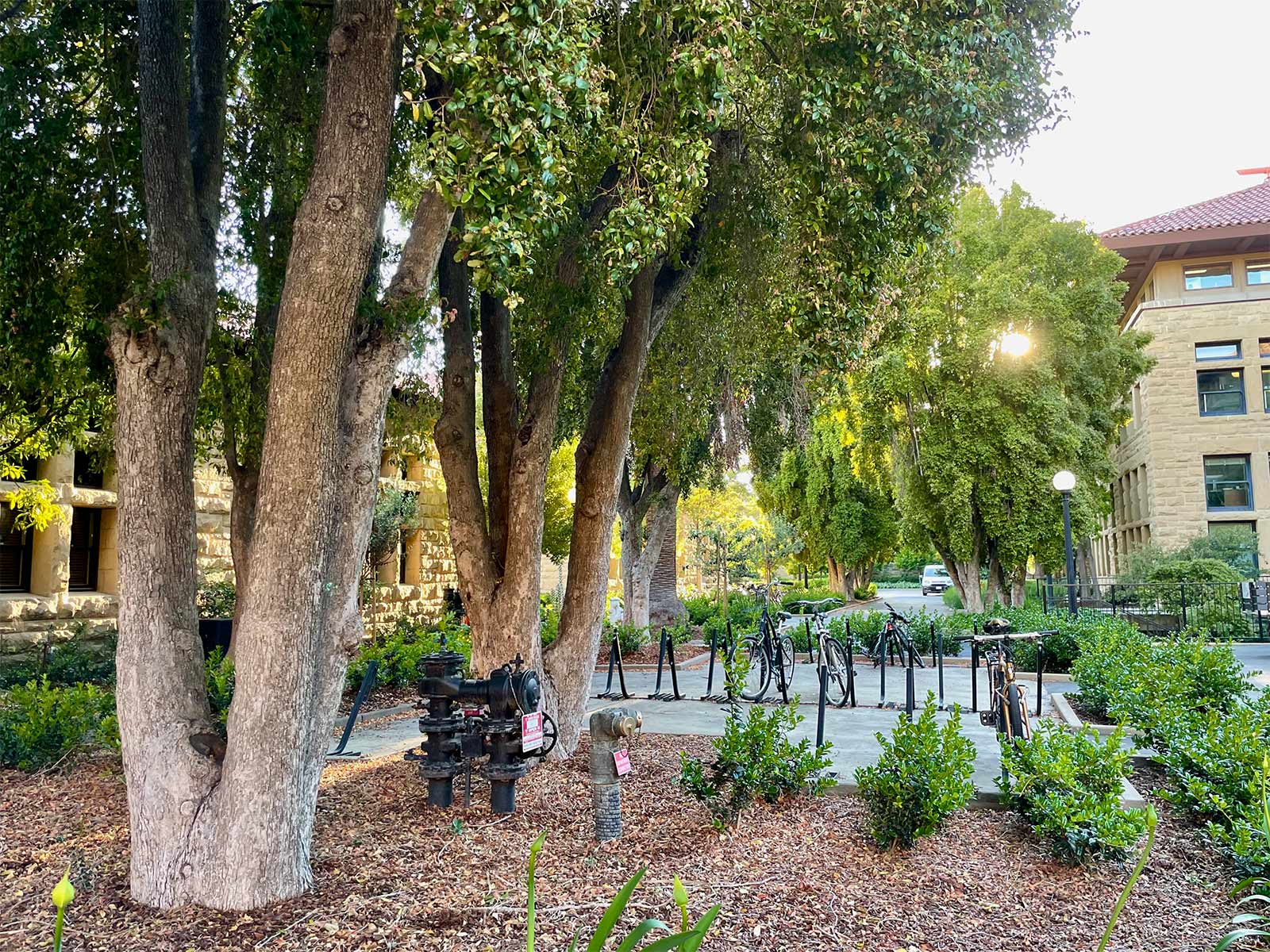Syzygium australe
 brush cherry
brush cherry

An erect narrow tree thickly clothed with glossy opposite leaves about 2 inches long with a good reddish color at first. The white flowers have petals but, as with other members of the family, such as Eucalyptus and Tristania, their main effect depends on the stamens. However, the fruit is quite different being a fleshy red “cherry,” which is perhaps thirst quenching but has no particular flavor. Large specimens can be seen at the northeast and southeast corners of Varian Physics; on the right side of the entrance to Bechtel International Center; and in many other locations. Two really big ones, each about 2 feet in diameter, are at 619 Mayfield Avenue. The lillypilly (S. smithii) is a related plant with pale-colored fruit from a similar rainforest environment and has pleasant crunchy flesh (but not much).
This species is often erroneously sold as and mistaken for Syzygium paniculatum, a rare species also from eastern Australia and only occasionally found in California.
Syzygy, the only word in the dictionary with three y’s and no other vowels, describes an astronomical situation of three celestial bodies in alignment, as occurs at the time of an eclipse. The language of botany presumably refers to the Greek meaning “yoked together.” But what are yoked together?
Name derivation: Syzygium – Greek, yoked together; australe – southern.
About this Entry: The main text of this entry is from the S. paniculatum entry in the book Trees of Stanford and Environs, by Ronald Bracewell, published 2005. Entry name updated to S. australe, ref. Matt Ritter (Oct 2017, SP).




